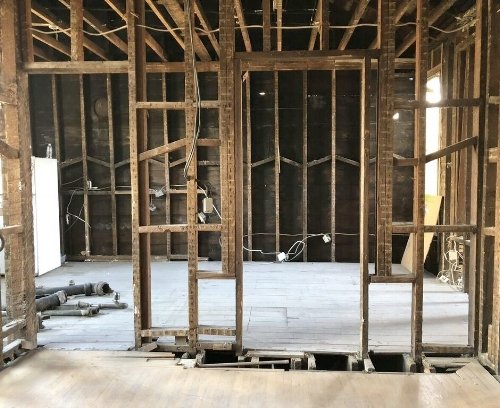WHAT YOU NEED TO KNOW BEFORE RENOVATING IN THE SAN FRANCISCO BAY AREA, PART 2
WHAT YOU NEED TO KNOW BEFORE RENOVATING IN THE SAN FRANCISCO BAY AREA, PART 2
When it comes to renovations, the Bay Area is a unique place. Between historical preservation, city planning commissions, and keeping the peace with your not-so-distant neighbors, building in the city and surrounding areas isn’t a stroll through Golden Gate Park!
Before you're in the midst of your project and wishing the nightmare would end (believe us, this happens more often than not), check out our advice on what you can proactively do to set yourself up for success. This is Part 2 of our two part series, and we're kicking it off with Tip #4. (Missed Part 1? Start here.)
Tip #4 / Plan the holistic picture + specific needs of your space
If you’re looking for someone to consider your space’s flow, daily function, style, finishes, furnishings, accessories, and art, you’ll want an interior designer on your team. Structural engineers and architects have their specific roles, and won't be able to get into the nitty gritty of interiors work. Interior designers are immersed in the latest designs, materials, and vendors for the items that go into your space, especially when it comes down to specific functional needs such as the latest in kid- and pet-friendly materials.
Tip: Assembling a reno team takes time, so start looking at least 1-2 months in advance before you want to start the design process. Consider the scope of your work and whether you simply want the architecture of the space done, or whether you want all the details completed down to the furnishing, art, and accessories.
An interior designer plans specializes in defining the details of your space
TIP #5 / Be realistic about your budget
Bay Area renovations range from a minimum of $300-$500 per sq ft, depending on the room, the finishes selected, and the amount of construction required (addition, rerouting pipes, windows, etc.).
To be safe, err high, and always have a contingency budget of at least 10% for unforeseen expenses. There may be surprises hiding behind those walls, or you may want to increase the scope along the way. If your budget doesn't cover your ideal scope, try to prioritize your wish list into phases that optimize the time and money to be spent. For example, if you're changing the flooring in a room, then consider if you should do painting at the same time so that the room can be efficiently completed.
Historic San Francisco homes may come with a greater number of surprises
TIP #6 / Anticipate the unique conditions of the Bay Area building boom
The current Bay Area building boom means your project may not begin right away. If you’re doing an extensive renovation, permits from your city can also take additional time, sometimes as long as 6-12 months or more, due to the back-up of requests.
Plus, the high demand for construction means that labor costs are increasing year over year in the double digits, so it’s important to lock down a contractor sooner rather than later. Contractors will line up other work for when they predict your project will end, and if there’s scope creep later during construction, there’s no guarantee your project will be completed by the same contractor... or in a timely manner.
The Solution: Assemble your team well in advance and clearly define scope based on your budget before construction starts. As interior designers who have been through the renovation process end-to-end, Form + Field is your partner and advocate throughout the entire journey and beyond.



